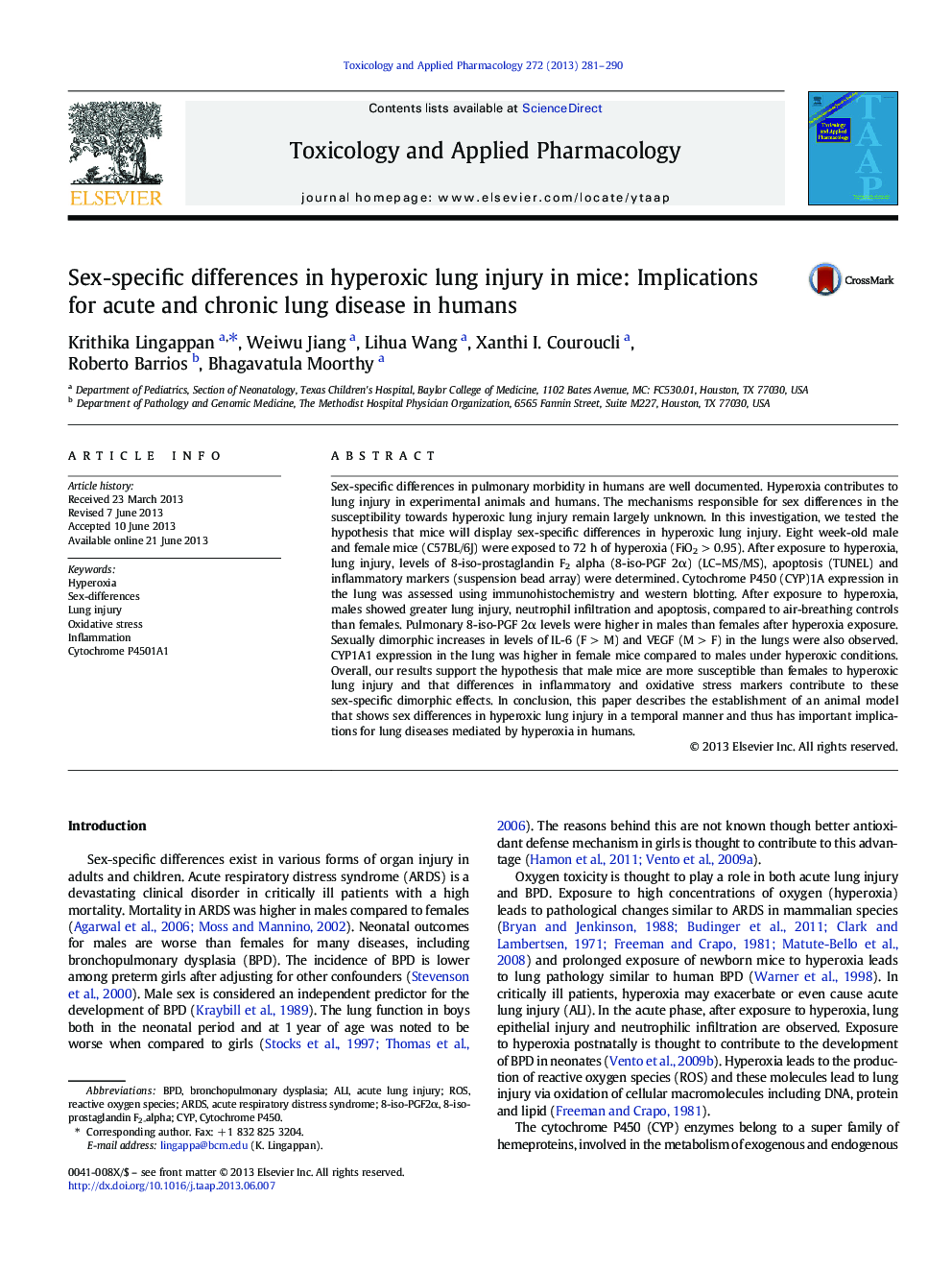| کد مقاله | کد نشریه | سال انتشار | مقاله انگلیسی | نسخه تمام متن |
|---|---|---|---|---|
| 5846636 | 1128495 | 2013 | 10 صفحه PDF | دانلود رایگان |
- Male mice were more susceptible to hyperoxic lung injury than females.
- Sex differences in inflammatory markers were observed.
- CYP1A expression was higher in females after hyperoxia exposure.
Sex-specific differences in pulmonary morbidity in humans are well documented. Hyperoxia contributes to lung injury in experimental animals and humans. The mechanisms responsible for sex differences in the susceptibility towards hyperoxic lung injury remain largely unknown. In this investigation, we tested the hypothesis that mice will display sex-specific differences in hyperoxic lung injury. Eight week-old male and female mice (C57BL/6J) were exposed to 72 h of hyperoxia (FiO2 > 0.95). After exposure to hyperoxia, lung injury, levels of 8-iso-prostaglandin F2 alpha (8-iso-PGF 2α) (LC-MS/MS), apoptosis (TUNEL) and inflammatory markers (suspension bead array) were determined. Cytochrome P450 (CYP)1A expression in the lung was assessed using immunohistochemistry and western blotting. After exposure to hyperoxia, males showed greater lung injury, neutrophil infiltration and apoptosis, compared to air-breathing controls than females. Pulmonary 8-iso-PGF 2α levels were higher in males than females after hyperoxia exposure. Sexually dimorphic increases in levels of IL-6 (F > M) and VEGF (M > F) in the lungs were also observed. CYP1A1 expression in the lung was higher in female mice compared to males under hyperoxic conditions. Overall, our results support the hypothesis that male mice are more susceptible than females to hyperoxic lung injury and that differences in inflammatory and oxidative stress markers contribute to these sex-specific dimorphic effects. In conclusion, this paper describes the establishment of an animal model that shows sex differences in hyperoxic lung injury in a temporal manner and thus has important implications for lung diseases mediated by hyperoxia in humans.
Journal: Toxicology and Applied Pharmacology - Volume 272, Issue 2, 15 October 2013, Pages 281-290
